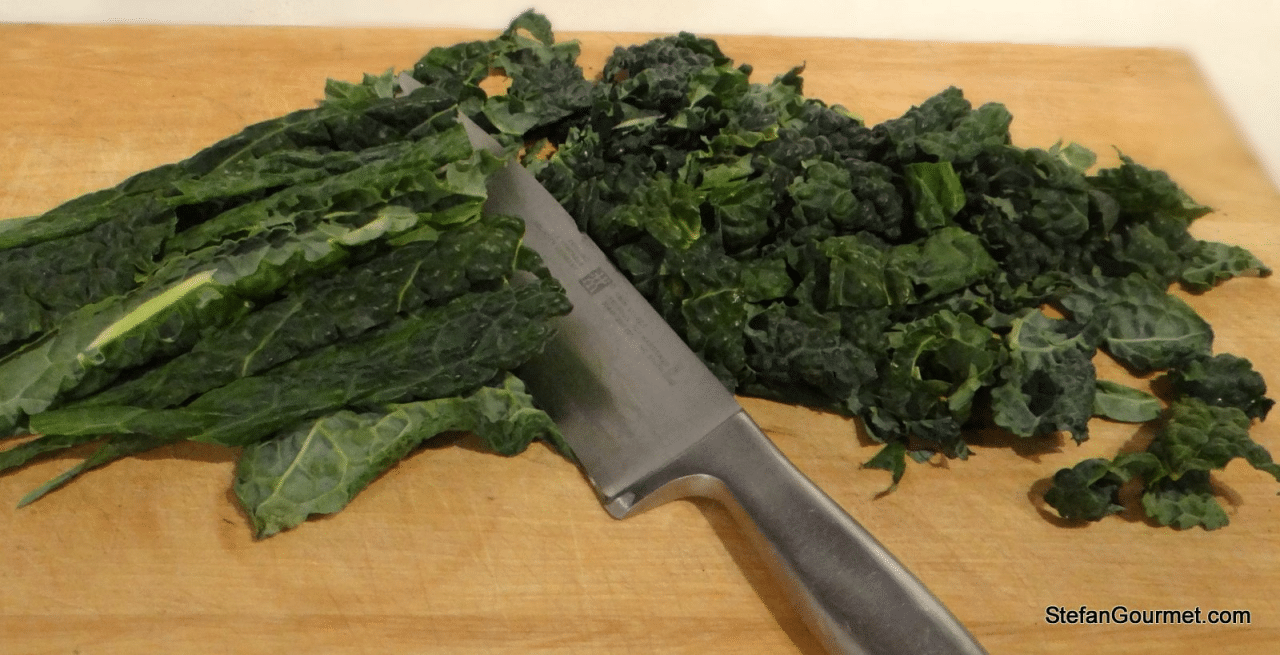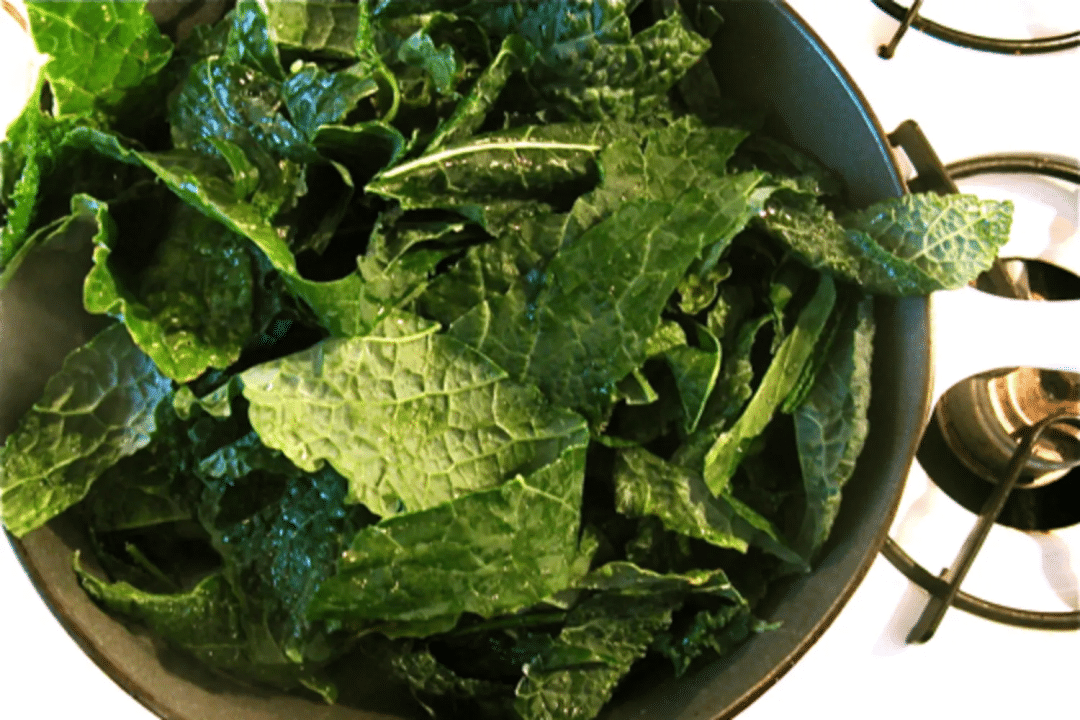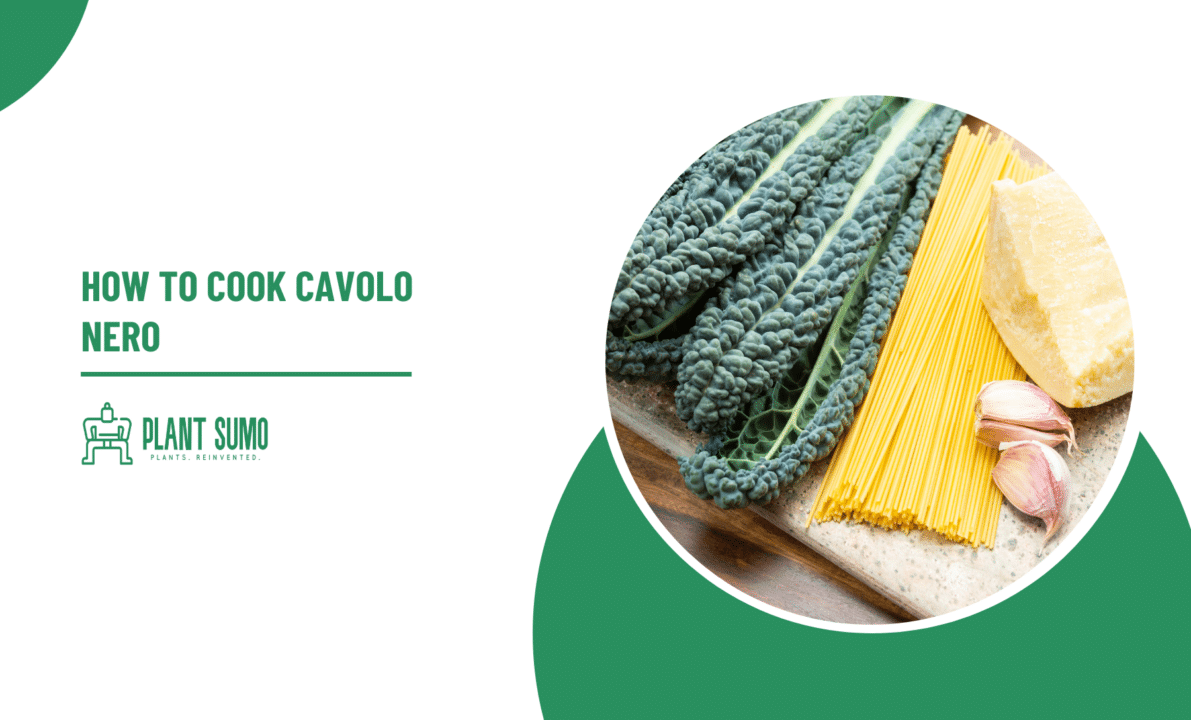How To Cook Cavolo Nero
Find out everything you need to know about cooking the Cavolo Nero, including Ingredients, method, food value, baying process, and FAQ too.
About Cavolo Nero: A loose-leaf cabbage from Tuscany, Italy. The leaves have a dark green, nearly black color, thus the name “black cabbage.” It has a delightfully tart, bitter flavor with a sweet aftertaste. Some individuals spell it ‘Cavalo Nero.’
The flavors of Cavolo Nero, butter, lemon, and garlic complement each other well, elevating this simple winter vegetable side dish to new heights.
Alternatively, instead of boiling the cavolo nero, try this fried Cavolo Nero meal for a fast and easy method to prepare the leafy green.

Cavolo Nero may be cooked in a variety of ways. For example:
- Cavolo Nero With Garlic Beurre Noisette
- Cavolo Nero With Garlic And Lemon
- Wild Barramundi, Cavolo Nero And Spanner Crab
- Sausage, Cavolo Nero And Chickpea Minestrone
- Orecchiette With Cavolo Nero And Porcini
- Cavolo Nero And Fontina Piadina
- Green Lentils With Salami And Cavolo Nero
- Mike Mcenearney’s Hash With A Fried Egg
- Guy Grossi’s Lucanian Sausages With Crisp Cavolo Nero
We’ll talk about a delectable recipe in this article. Cavolo Nero With Garlic Beurre Noisette is the recipe. We’ll attempt to go through each point one by one. Let’s get this party started.
If you want to receive your Cavolo Nero, there are a few steps you need to do. They are presented in the article below.
- Clean the leaves by rinsing them and patting them dry.
- Separate the leaves from the stiff center stem.
- Continue with the remaining leaves, reserving the stalks for soup, roasting, or smoothies.
- Place the two sides of the leaf over each other and slice into 1 inch wide thin strips.
- Cavolo nero, chopped and ready to use.

- 350g cavolo nero (Italian black cabbage), with the large central stalks cut off.
- 15g of butter
- 1 small clove of garlic, chopped up
- 1 tablespoon of lemon juice
- Shred the cavolo nero into strips that are about 1cm wide, then put them in a bowl. Salty water should come to a boil. Add cavolo nero, then bring the water back to a boil. Cook for about 4 to 5 minutes until the leaves are just soft. Drain well, then press out any extra liquid (like you would for spinach). Then, put it back in the pan that’s already hot. To keep it warm, cover it.

- In a small pan, melt the butter over medium-low heat, swirling the pan a few times, until it’s golden brown and smells like nuts. A few seconds after you’ve added the garlic, add the lemon juice and quickly pour it on top of the chard. It’s time to serve.

- Calories: 103kcals
- Fat: 6.9g (4.1g Saturated)
- Protein: 3.1g
- Carbohydrates: 7.1g (6.8g Sugars)
- Fiber:5.7g
- Salt: 0.1g
Black kale is just as nutritious as kale in terms of antioxidants, vitamins (A, C, K), and minerals (calcium, iron, manganese). Numerous research have shown significant health advantages for various conditions. We encourage you to study such studies in order to learn more, since there is a limitless bibliography.
It is a member of the “Dark Leafy Green Vegetables” family – or “DGLF” as nutritionists and nutritional therapists refer to them – which includes cabbage, kale, spinach, and other vegetables that are needed for a balanced and nutritious diet. You won’t want to miss the black cabbage, which is one of my favorites.
Both a hybrid and a cherished Tuscan delicacy. Black cabbage is abundant in Tuscany, while supplies in other areas of the globe are scarce. This cabbage is extremely popular in Italian cuisine throughout the winter months. Cabbage is an ancient Mediterranean wild plant that belongs to the Crucifer or mustard family. Cabbage is divided into leaves (kale), heads (common or Savoy cabbage), gems (Brussels sprouts), hypertrophied flowers (broccoli and cauliflower), and roots (broccoli and cauliflower) (turnips).
Cavolo nero is a delightful and simple way to get one of your five-a-day servings, and it may play an essential role in a healthy balanced diet. It contains lutein, vitamins K, A, and C, as well as a considerable amount of B vitamins, much like kale.
Cavolo nero is supple and chewy after cooking, with a pleasing bite, a subtly bitter flavor, and a somewhat sweet aftertaste.
Cavolo Nero Kale has 3.8 grams of total carbohydrates, 1 gram of net carbs, 1.1 grams of fat, 2.4 grams of protein, and 30 calories per serving.
The leaves of fresh raw cavolo nero may be kept in the fridge for up to 2 weeks if washed before use. To freeze the leaves, wash them, blanch them for 2 minutes in boiling water, then transfer to ice water for 2 minutes, then remove and pat dry. Freeze for up to a year in an airtight freezer bag. Allow to come to room temperature before using, or use frozen.
Cavolo nero is a winter vegetable that is available from June to March.
Cavolo nero leaves should be chopped or shredded, and any tough, woody stalks should be removed. Serve it as a simple side dish or as part of stir-fries, soups, and curries after steaming, boiling, or sautéing it. Cavolo nero pairs beautifully with garlic and chili, and it’s also excellent tossed into pasta and topped with grated Parmesan or pecorino.





